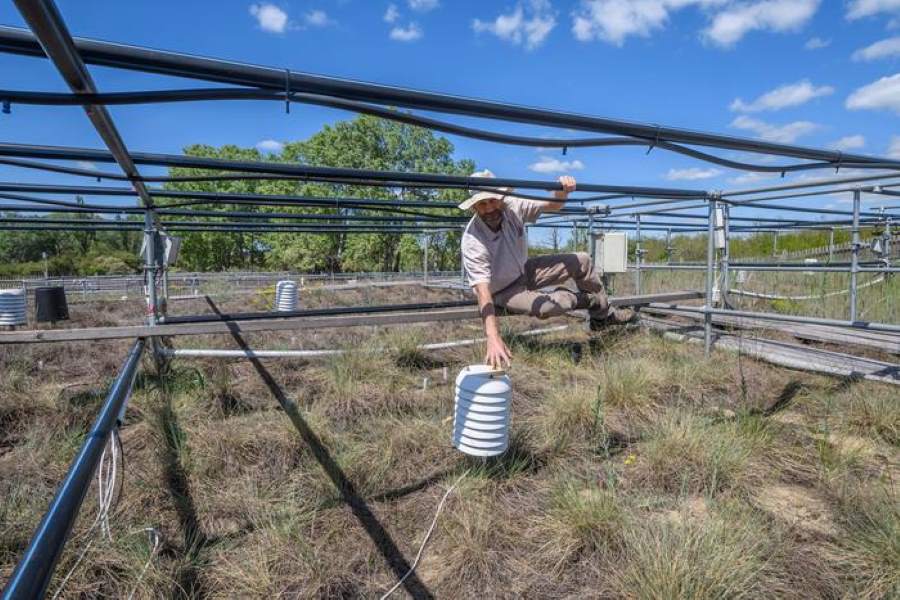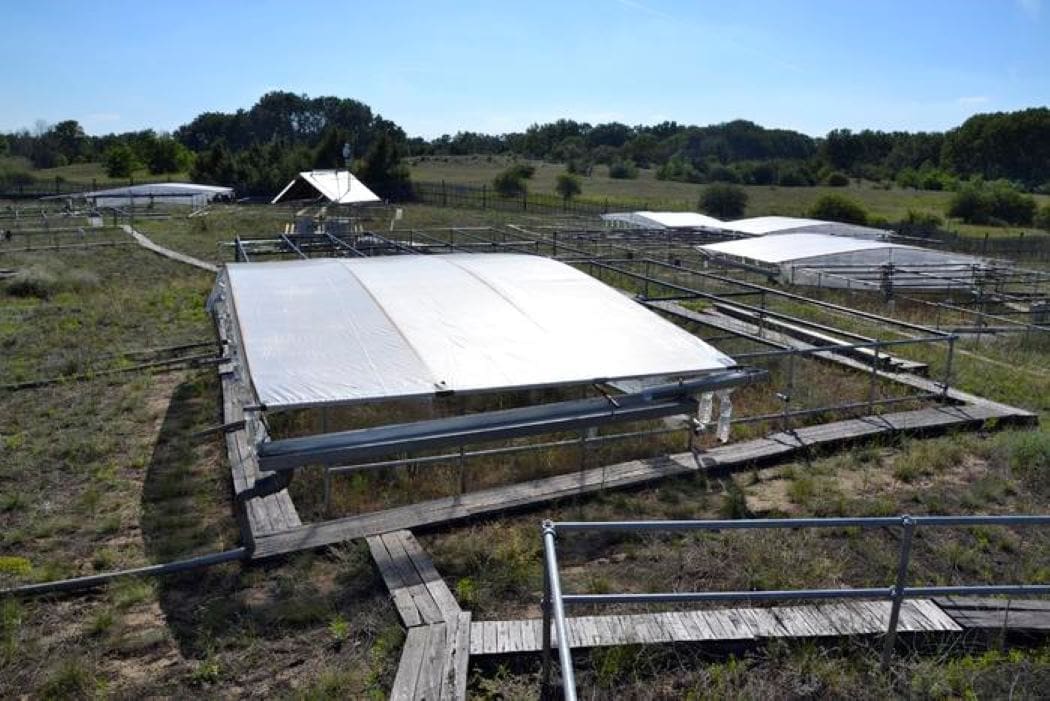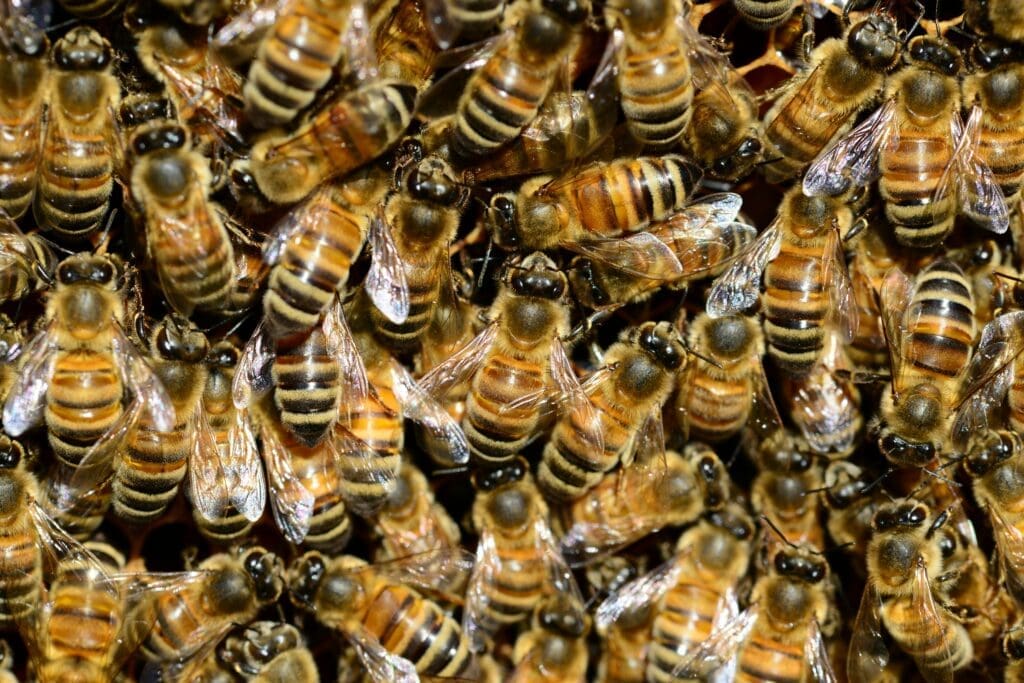Summary:
Declining precipitation leads to a loss of plant species in dryland ecosystems, but the role of dominant grasses in this process is more complex than previously thought.
A long-term field experiment in a temperate grassland has revealed that while decreasing precipitation consistently reduces species richness, increasing rainfall can also have an unexpected effect.
The study, published in the Journal of Ecology, shows that when water availability rises, dominant grasses expand, outcompeting smaller species and reducing overall diversity. The researchers combined extreme drought conditions with seven years of altered summer precipitation to investigate how these changes affect plant communities.
Their findings suggest that species richness becomes more sensitive to precipitation shifts after extreme droughts, particularly when dominant species recover. By disentangling direct and indirect effects of rainfall, the study shows the intricate relationship between precipitation and biodiversity.
As climate change drives more frequent droughts and shifting rainfall patterns, understanding these dynamics is crucial for predicting future biodiversity loss and managing ecosystems effectively.

Reduced rainfall threatens plant diversity
Predicting and mitigating the effects of climate change while preserving biodiversity is a top priority for both scientists and policymakers. As climate change intensifies, leading to more frequent and severe droughts, understanding the impact on natural ecosystems has become increasingly important.
One of the main challenges is forecasting changes in species richness due to shifts in precipitation patterns. While it’s established that, on a broad geographic scale, regions with more water generally support greater plant diversity, results vary at smaller plot levels concerning how rainfall affects species richness. To improve predictions, it’s essential to explore the underlying mechanisms – particularly how intense droughts and long-term rainfall changes impact biodiversity.
A new study shows that increased aridity at the plot level is indeed linked to a decrease in plant species richness, and this connection is even more pronounced following extreme droughts. However, this phenomenon is not easy to detect because in the absence of drought, dominant plant species can obscure this effect.
The study, carried out by the HUN-REN Centre for Ecological Research in Hungary, examines the intricate connections between long-term changes in rainfall, extreme drought conditions, the biomass of dominant plant species, and plant species diversity in a dryland ecosystem. The research reveals that increased dryness leads to a reduction in plant species diversity in drylands and uncovers the mechanisms through which rising aridity contributes to biodiversity loss in these fragile ecosystems.
Using data from a seven-year climate change field experiment, researchers conducted a path analysis to examine how precipitation influences species diversity, both directly and indirectly. The experiment simulated an extreme drought event followed by long-term variations in summer rainfall with the use of rainout shelters.
Initial analysis showed a strong positive relationship between rainfall and species diversity after extreme drought treatment, but this effect was absent without drought. Interestingly, the path analysis uncovered another layer: in the absence of drought, increased rainfall boosted the biomass of dominant grass species, leading to a decrease in overall plant diversity.
Nevertheless, the direct effect of rainfall remained positive, enhancing species richness even when dominant species exerted a suppressive impact. Additionally, the study revealed that past extreme droughts strengthened the link between rainfall and species diversity.
Lead author Dr. Gábor Ónodi explains: “Droughts weaken dominant species, creating opportunities for other plants to thrive, potentially altering the plant community.”
These findings have significant implications for predicting how natural ecosystems will respond to future climate change. Dr. György Kröel-Dulay, the lead researcher of the field experiment, notes: “As global temperatures rise and precipitation patterns become more extreme, ecosystems may become increasingly sensitive to changes in water availability.”
The study underscores the importance of considering both direct and indirect effects when evaluating the impact of climate change on biodiversity.
Senior author Dr. Zoltán Botta-Dukát adds: “By deepening our understanding of these dynamics, we can better anticipate upcoming challenges and develop more effective strategies for conserving biodiversity in a world facing growing environmental uncertainties.”
Journal Reference:
Ónodi, G., Kertész, M., Bede-Fazekas, Á., Batáry, P., Kröel-Dulay, G., & Botta-Dukát, Z., ‘Decline in plant species richness with a chronic decrease of precipitation: The mediating role of the dominant species’, Journal of Ecology online, 1–13 (2025). DOI: 10.1111/1365-2745.14483
Article Source:
Press Release/Material by HUN-REN Centre for Ecological Research (HUN-REN Ökológiai Kutatóközpont)
Featured image: Chronic precipitation treatments (along with decreasing aridity: severe drought, moderate drought, control and water addition) simulates changes in precipitation that have occurred several times historically. The image shows severe drought management, which excludes all rainfall from late June to late August. Prior to chronic treatments, half of the plots were exposed to an extreme treatment which simulated a drought unprecedented since the beginning of regional measurements. Credit: Dr. György Kröel-Dulay | CC BY-NC-ND



